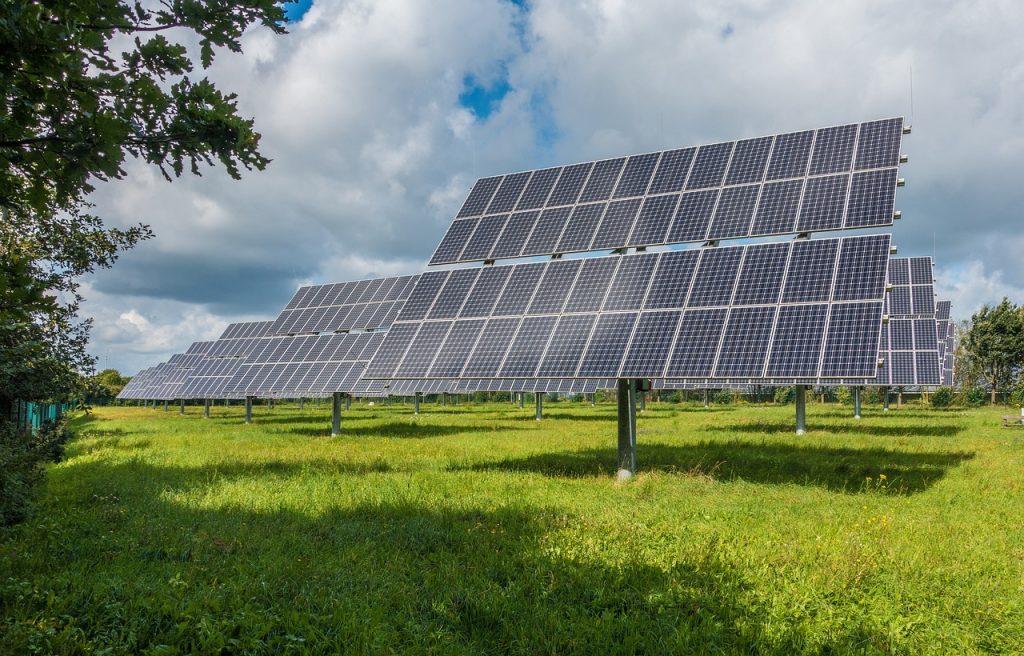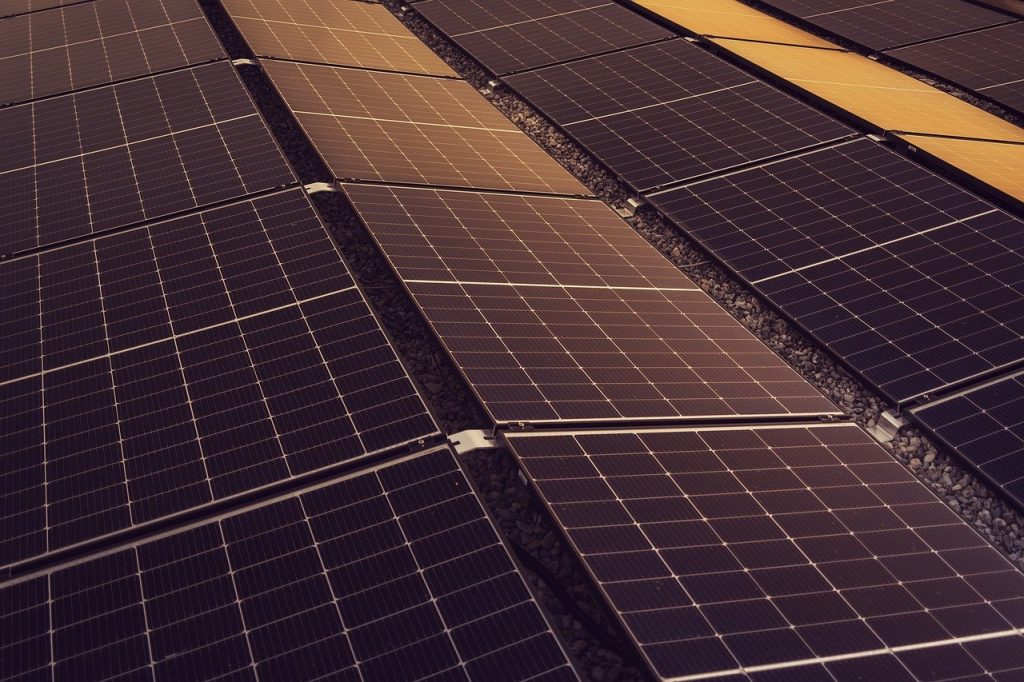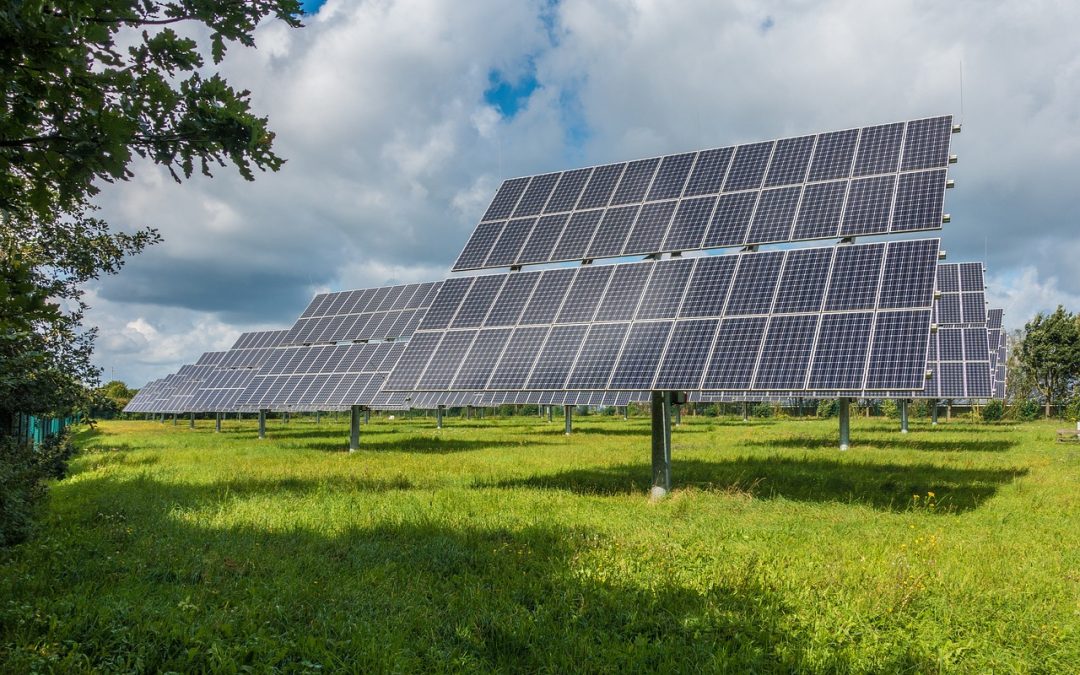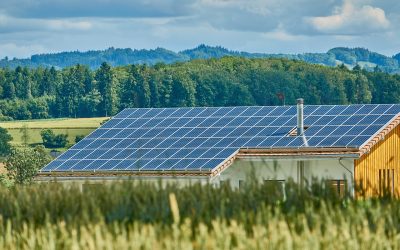So you’re interested in learning about solar power and its impact on our resources? Well, you’re in luck because in this article, we’re going to delve into the fascinating world of solar power and why it is an energy source that doesn’t deplete our precious resources. It’s no secret that our current reliance on fossil fuels is causing significant harm to the environment, but solar power offers a clean and sustainable alternative. By harnessing the power of the sun, we can generate electricity without depleting our finite resources, making it a key player in paving the way for a greener future. So let’s dive right in and explore the incredible benefits of solar power!

The Basics of Solar Power
How solar power works
Solar power is a form of energy that is derived from the sun’s radiation. It harnesses the sunlight and converts it into electricity through the use of solar panels. These panels are made up of photovoltaic cells that contain semiconductors, such as silicon. When sunlight hits these cells, it stimulates the electrons, causing them to move and generate an electric current. This current is then captured and converted into usable electricity that can power homes, businesses, and even entire communities.
Advantages of solar power
Solar power offers several advantages over traditional energy sources. Firstly, it is a renewable source of energy, meaning it relies on an abundant and inexhaustible resource – the sun. This makes it a sustainable and environmentally friendly alternative to non-renewable energy sources such as fossil fuels. Additionally, solar power helps reduce greenhouse gas emissions, which contributes to mitigating climate change. Moreover, solar energy systems are becoming more affordable and accessible, allowing individuals and businesses to save on electricity costs in the long run.
Types of solar power systems
There are various types of solar power systems available, each with its own unique features and applications. The most common type is the grid-tied solar power system, which is connected to the utility grid. These systems allow for the excess energy produced by solar panels to be fed back into the grid, earning credits or monetary compensation. Off-grid solar power systems, on the other hand, operate independently from the utility grid and rely on battery storage to provide electricity during periods of no sunlight. Hybrid solar power systems combine the benefits of grid-tied and off-grid systems, providing the flexibility to switch between them based on individual needs.
Solar Energy and Resource Depletion
Understanding resource depletion
Resource depletion refers to the gradual exhaustion of Earth’s natural resources due to human consumption and unsustainable practices. It is a significant concern as many of our energy sources, such as fossil fuels, are non-renewable and finite in nature. The extraction and utilization of these resources lead to their eventual depletion, creating a need for alternative and renewable energy sources.
Effects of resource depletion
Resource depletion has several negative effects on the environment and society as a whole. The extraction and burning of fossil fuels, for example, release greenhouse gases into the atmosphere, contributing to global warming and climate change. Additionally, the depletion of resources can lead to energy scarcity, economic instability, and geopolitical tensions. It is crucial to find sustainable alternatives to reduce our reliance on non-renewable resources and mitigate these adverse effects.
Comparing solar power with other energy sources
When comparing solar power with other energy sources, it becomes evident that solar energy offers several advantages in terms of resource depletion. Unlike fossil fuels, solar power does not require the extraction of finite resources from the Earth and, therefore, does not contribute to resource depletion. Instead, solar power relies on the sun’s energy, which is continuously available and does not deplete over time. By harnessing solar power, we can reduce our dependence on non-renewable energy sources and promote a more sustainable future.
Renewable Nature of Solar Power
What is renewable energy?
Renewable energy refers to energy sources that are naturally replenished and do not deplete over time. Unlike non-renewable energy sources, such as fossil fuels, renewable energy relies on constantly available resources, such as sunlight, wind, and water. By utilizing these sustainable sources of energy, we can reduce our environmental impact and ensure a more stable and secure energy future.
Solar power as a renewable energy source
Solar power is considered one of the most abundant and accessible forms of renewable energy. The sun’s energy is constantly available and does not deplete over time. As long as we have sunlight, we can harness its power to generate electricity. Solar power systems can be installed on rooftops, in solar farms, and even in space, making it a versatile and globally applicable energy solution.
Benefits of using renewable energy
Utilizing renewable energy sources like solar power brings several benefits to society and the environment. Firstly, it reduces our reliance on non-renewable energy sources, reducing the demand for fossil fuels and mitigating the associated environmental impact. Moreover, renewable energy sources help to diversify our energy portfolio, making us less vulnerable to price fluctuations and geopolitical tensions related to fossil fuel reserves. Additionally, investing in renewable energy creates jobs and stimulates economic growth in the clean energy sector.
Solar Power and Non-renewable Resources
Dependency on non-renewable resources
Many of our current energy systems heavily rely on non-renewable resources, such as coal, oil, and natural gas. These resources are finite in quantity and will eventually be depleted. Our dependence on these resources not only contributes to resource scarcity but also poses significant environmental risks, such as air and water pollution, as well as climate change.
Environmental impact of non-renewable energy sources
Non-renewable energy sources have a detrimental impact on the environment and human health. The extraction of fossil fuels often involves destructive mining practices that harm ecosystems and disrupt local communities. Burning these fuels releases greenhouse gases, leading to climate change and contributing to air pollution. The transportation and storage of fossil fuels also pose risks of oil spills and other accidents, further damaging the environment.
Reducing reliance on non-renewable resources through solar power
Solar power provides a sustainable solution to reduce our reliance on non-renewable resources. By harnessing the unlimited energy from the sun, we can generate electricity without depleting finite resources or causing environmental harm. Transitioning to solar power systems can help mitigate the environmental impacts associated with non-renewable energy sources and pave the way for a more sustainable future.

Solar Power and Fossil Fuels
The depletion of fossil fuels
Fossil fuels, such as coal, oil, and natural gas, are derived from once-living organisms that accumulated over millions of years. These resources are finite and, at the current rate of consumption, are being depleted faster than they can be replenished. The depletion of fossil fuels poses a significant challenge to our energy security and necessitates the adoption of alternative and renewable energy sources.
Solar power as an alternative to fossil fuels
Solar power offers a clean and renewable alternative to fossil fuels. Unlike fossil fuels, solar power does not release greenhouse gases or contribute to climate change. By harnessing the sun’s energy, we can generate electricity without depleting resources or causing environmental harm. Furthermore, solar energy systems are becoming increasingly cost-effective, making them a viable and sustainable option for meeting our energy needs.
Advantages of transitioning to solar energy
Transitioning to solar energy offers numerous advantages over fossil fuels. Firstly, solar power reduces our carbon footprint by eliminating greenhouse gas emissions associated with fossil fuel combustion. This helps combat climate change and improve air quality. Secondly, solar power provides energy independence and resiliency, as it is generated locally and does not rely on foreign imports. Additionally, solar energy systems have lower operational costs compared to fossil fuel power plants, providing long-term savings for individuals and businesses.
Lifecycle Analysis of Solar Power
What is lifecycle analysis?
Lifecycle analysis, also known as life cycle assessment (LCA), is a comprehensive evaluation of the environmental impacts of a product or system throughout its entire lifecycle. It takes into account all stages, including raw material extraction, manufacturing, use, and disposal. By analyzing the energy and resource inputs, as well as the emissions and waste outputs, of a product or system, we can assess its overall environmental impact and identify opportunities for improvement.
Lifecycle analysis of solar power systems
Lifecycle analysis of solar power systems considers the various stages involved in their production, installation, operation, and end-of-life management. The analysis evaluates factors such as the energy and resources required for the manufacturing of solar panels, the emissions associated with their transportation and installation, the efficiency and lifespan of the panels, and the processes for recycling or disposing of them at the end of their useful life. This comprehensive analysis helps identify ways to optimize the environmental performance of solar power systems.
Comparing the environmental impact of solar power with other energy sources
When comparing the environmental impact of solar power with other energy sources, such as fossil fuels, the lifecycle analysis reveals significant advantages for solar energy. Solar power systems produce zero greenhouse gas emissions during operation, leading to a lower carbon footprint compared to fossil fuel power plants. Additionally, the use of renewable energy sources mitigates the negative impacts associated with resource extraction, such as habitat destruction and water pollution. While solar power systems do have some environmental impact during their lifecycle, proper management and recycling can minimize these effects, making them a more sustainable choice.

Sustainable Development and Solar Power
The concept of sustainable development
Sustainable development refers to meeting the needs of the present without compromising the ability of future generations to meet their own needs. It involves finding a balance between economic development, social well-being, and environmental protection. The integration of renewable energy sources, such as solar power, plays a crucial role in achieving sustainable development goals.
Integration of solar power in sustainable development practices
Solar power integration in sustainable development practices offers several benefits. By utilizing the sun’s energy, we can reduce greenhouse gas emissions, combat climate change, and improve air quality. Solar energy systems also contribute to energy security and independence by providing a reliable and decentralized source of electricity. Moreover, solar power can create employment opportunities and stimulate economic growth in the clean energy sector, supporting social and economic sustainability.
Promoting long-term resource preservation through solar energy
Solar energy promotes long-term resource preservation by reducing our dependence on non-renewable resources. By utilizing the sun as an abundant and renewable resource, we can minimize the negative impacts associated with the extraction and consumption of finite resources. Furthermore, solar power systems have a longer lifespan compared to fossil fuel power plants, reducing the need for frequent replacement and minimizing waste generation. Embracing solar energy as part of sustainable development practices ensures a more sustainable and resilient future for generations to come.
Solar Power Efficiency and Resource Conservation
Maximizing solar power efficiency
Solar power efficiency refers to the percentage of sunlight that is converted into usable electricity. Increasing the efficiency of solar power systems is essential to maximize their energy output and improve their cost-effectiveness. Several factors can influence efficiency, including the quality and design of solar panels, optimal positioning and orientation to capture sunlight, and the use of advanced technologies such as tracking systems and concentrated solar power.
Conserving natural resources through solar energy
Solar energy conservation extends beyond efficient electricity generation. By relying on the sun’s energy, we reduce the need to extract and consume non-renewable resources, such as fossil fuels. This conservation helps preserve natural habitats, prevents habitat destruction caused by resource extraction, and minimizes water pollution associated with mining and drilling operations. Furthermore, solar power systems require minimal water for operation compared to other energy sources, making them a more sustainable choice in regions facing water scarcity.
Technological advancements in solar power
Ongoing technological advancements in solar power continue to improve its efficiency and scalability. Research and development efforts focus on enhancing the performance of solar panels, developing cost-effective energy storage solutions, and integrating solar power with other renewable energy sources. From flexible solar panels to transparent solar cells and even solar-powered vehicles, these advancements contribute to the growth and expansion of solar energy as a reliable and sustainable energy solution.
Solar Power and Water Conservation
Water scarcity and traditional energy sources
Conventional energy sources, such as coal and nuclear power plants, require significant amounts of water for cooling purposes. This reliance on water poses a challenge in regions facing water scarcity or drought conditions. Extracting, transporting, and disposing of fossil fuels also have water-related impacts, including contamination and water resource depletion. Finding alternatives that reduce water consumption is crucial for sustainable energy production.
Solar power as a water-conserving alternative
Solar power offers a water-conserving alternative to traditional energy sources. Photovoltaic solar panels do not require water for operation, allowing for electricity generation without depleting water resources. Unlike thermal power plants, which use water for cooling purposes, solar power systems operate largely independent of water, making them ideal for regions susceptible to drought or water scarcity. By embracing solar energy, we can contribute to water conservation efforts and reduce the strain on water resources.
Benefits of reducing water consumption through solar energy
Reducing water consumption through solar energy provides several benefits. Firstly, it helps conserve water resources, ensuring their availability for other essential needs such as agriculture, drinking water, and ecosystem preservation. Secondly, it mitigates the environmental impacts associated with traditional energy sources, such as water pollution and habitat destruction caused by resource extraction. Lastly, water-conserving solar power systems promote sustainable development by supporting energy security, reducing reliance on fossil fuels, and combating climate change.
Addressing Concerns and Challenges
Solar panel production and resource use
It is essential to address concerns related to the production and resource use associated with solar panels. While the manufacturing process of solar panels does require energy and raw materials, technological advancements and increased recycling efforts have significantly reduced their environmental impact. Manufacturers are continuously improving the efficiency of production methods and exploring sustainable alternatives to materials used in panel manufacturing, such as thin-film solar cells and recyclable components.
Recycling and end-of-life management of solar panels
Proper recycling and end-of-life management of solar panels are crucial to minimize waste and maximize resource recovery. Solar panels contain valuable materials, such as silicon, glass, and metals, that can be recycled. Developing efficient and cost-effective recycling processes helps recover these materials, reducing the need for new resource extraction. Governments and industries around the world are implementing regulations and initiatives to encourage and facilitate the recycling of solar panels, ensuring a sustainable lifecycle for these renewable energy systems.
Overcoming barriers to widespread solar power adoption
While solar power has seen significant growth in recent years, several barriers hinder its widespread adoption. These barriers include high upfront costs, lack of awareness and education about solar energy, regulatory hurdles, and limited access to financing options. To overcome these challenges, governments, businesses, and communities need to implement supportive policies and incentives that promote the affordability and accessibility of solar power. Additionally, raising awareness and providing education on the benefits of solar energy can empower individuals and communities to embrace this sustainable energy solution.
In conclusion, solar power is a renewable and sustainable energy source that offers numerous advantages over traditional non-renewable energy sources. By harnessing the sun’s energy, we can generate electricity without depleting finite resources or contributing to climate change. Solar power integration supports sustainable development goals, promotes resource conservation, and mitigates environmental impacts associated with non-renewable energy sources. As technological advancements continue and barriers to adoption are overcome, solar power has the potential to play a significant role in achieving a more sustainable and resilient future.










